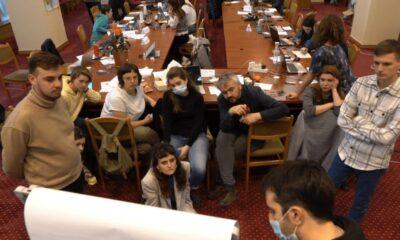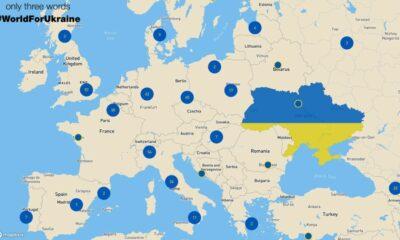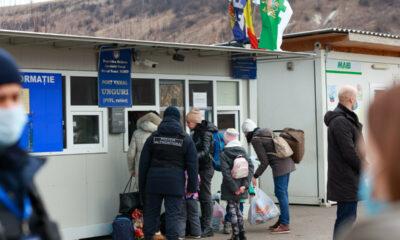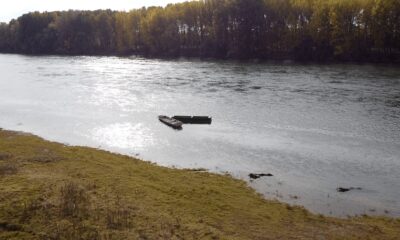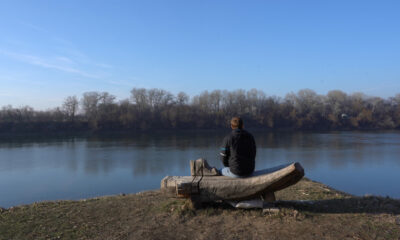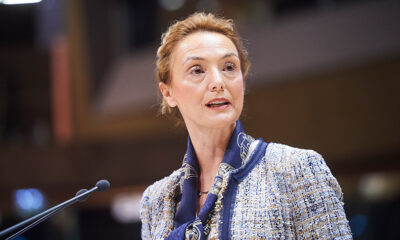Economy
Francis Delaey: BERD's annual investments in Moldova to increase to 30 million euros per year, but it will depend on actual demand
Reading Time: 5 minutesFrancis Delaey: BERD’s annual investments in Moldova to increase to 30 million euros per year, but it will depend on actual demand
BASA-press Agency interivew with Francis Delaey, Representative of the European Bank of Reconstruction and Development to Moldova
BASA-press: An expert team has recently been in Chisinau to develop the Bank’s Assistance Strategy for Moldova in 2007-2009. What stage does the document undergoes now and what will its basic provisions be? What is the difference between this document and the existent cooperation framework between the Republic of Moldova and EBRD?
Francis Delaey: EBRD is currently preparing its 2007-2009 country strategy for Moldova. The full process takes about five months. It involves different approval stages by EBRD’s management and consultations with the Government, other IFIs and donors. Right now we have just started the process. Early May EBRD will post the full draft strategy on its website with an invitation to the public to comment. Final approval by EBRD’s Board of Directors is expected in June 2007.
The new country strategy will build on the achievements of the current 2005-2007 country strategy. We do not expect any major departures. Supporting private enterprise and financial institutions will remain EBRD’s number one priority. Having said this, a new IMF programme in 2006 and the subsequent Paris club debt rescheduling has enabled Moldova to resume its sovereign infrastructure financing. In this respect EBRD, in cooperation with other IFIs and donors, looks forward to assist Moldova in financing selected infrastructure projects.
2. What is your opinion about the implementation of the previous Assistance Strategy?
The current country strategy expires in June 2007. So far, 18 new projects were signed in the financial and private enterprise sectors for a total amount of 30 million euro. We hope to sign some more projects in the next couple of months. So the final amount is likely to be closer to 40 million euro for approximately 21 projects. In terms of number of projects this is a record for EBRD in Moldova.
In addition to financial support, EBRD also provided technical assistance funded by approximately 3 million euro grant financing from various donors. Among others, EBRD assisted the Government in drafting a new mortgage law, provided assistance to two banks to set up a micro-finance programme, and provided consultancy services to 21 companies through its Turn Around Management (TAM) and Business Advisory Services (BAS) programmes.
3. What will the crediting key spheres be in 2007 and in the period to follow? Can we already speak of a specific number of projects, the spheres they will be implemented in, and the crediting volume?
Our main priority for 2007 will remain supporting private enterprise and financial institutions, but we are looking to expand to new sectors such as telecoms and property and providing new financial instruments such as mortgage credit lines. We would also like to resume infrastructure lending. Discussions are currently ongoing between the Government and the World Bank, the European Investment Bank and EBRD to finance Moldova’s road rehabilitation programme. Discussions are going well and will hopefully be finalised in the first half of this year. We currently estimate to invest 30 million euro per year but this can be more or less depending on actual demand.
4. EBRD experts said the Bank’s projects in the Moldovan banking sphere were successful. What can be expected in this direction of cooperation in the future?
EBRD will continue to provide its local partner banks with access to credit lines, its Trade Facilitation Programme (TFP) as well as its Medium-sized Co-financing Facility (MCFF). We would also like to develop new products like leasing and mortgage financing and extend our cooperation to other banks that meet our transparency and corporate governance requirements.
5. A potential leasing and mortgage funding project was mentioned earlier. Are they undergoing a phase of intentions or talks are already being held over them? What would be the mortgage crediting terms and conditions?
We hope to do at least one leasing and one mortgage project in 2007. Currently we don’t have any concrete projects but we have had some preliminary discussions with a number of potential partners. The terms and conditions will be subject to negotiations, but typically the mortgage loans would have a maturity of 10 years.
6. Earlier, the EBRD provided financing for a series of infrastructure projects. However, this assistance has been reducing over the recent years. What determined this? Is it true that financing in this direction was limited due to the assumed loans that had not been reimbursed in time? As, for instance, is the one related to Apa-Canal activity. Will you return to infrastructure projects?
Since 2001, EBRD has not financed any infrastructure projects in Moldova. The reason for this was the lack of interest from investors for infrastructure projects, absence of creditworthy utility operators, and the limited debt capacity of the Moldovan government. The new IMF programme in 2006 and the subsequent Paris club debt rescheduling allow Moldova to take on new debt and enable EBRD to resume its sovereign infrastructure financing. As mentioned already, EBRD – together with the World Bank and the European Investment Bank – is currently discussing Moldova’s road rehabilitation programme with the Government.
The financial problems encountered by Apa-Canal and Termocom are a separate issue. The reluctance to increase tariffs to cost recovery level put these companies under financial strain. Low tariffs undermined the sustainability of their operations and made further investments in the municipal infrastructure sector unattractive. For that reason, EBRD stated it would only resume its investments in the municipal sector, once the tariffs have been increased. Now that tariffs have been increased, EBRD is willing to resume its municipal infrastructure lending provided sufficient grant financing can be found to address affordability constraints and IMF’s concessionality requirements..
7. Given that many creditors provide preferential loans to Moldova, does EBRD intend to be more "indulgent" in terms of crediting conditions?
Unlike some other IFIs, EBRD’s mandate does not allow it to provide "soft" loans (i.e. non- commercial loans with low interest rates and long maturities). This can be an issue in public infrastructure projects, particularly when a country has affordability constraints and IMF concessionality requirements. To address this EBRD works with other IFIs and attracts grant co- financing from donors to offer a blended financial package with "soft" terms and conditions.
8. Is the small and medium-sized enterprise sector reflected in EBRD’s crediting plans?
Small and medium-sized enterprises (SMEs) are the backbone of Moldova’s economy and supporting their development is one of EBRD’s main objectives. EBRD works closely with local banks and micro-finance institutions to provide financing to micro, small and medium-sized enterprises. In addition EBRD has developed a number of new products which allow us to do smaller projects more efficiently. Finally, EBRD also provides non-financial support to private enterprises through its Turn Around Management (TAM) and Business Advisory Services (BAS) programmes.
9. What are EBRD’s predictions about Moldova’s economic growth and inflation in 2007? To what extent do you think will direct foreign investments develop in the Republic of Moldova in 2007?
We expect the economy to rebound slightly, following the shock in 2006. The resumption of wine exports to Russia, while delayed for the moment, should provide temporary relief for the sector. Further expansion in the services and construction sectors are expected, largely driven by remittances. EBRD expects the Moldovan economy to grow at 5 per cent in 2007.
We also expect foreign direct investment to increase in 2007. The presence of strategic investors in the banking sector, a growing retail market and a booming construction sector will continue to attract foreign investment in the course of the year. However, in order to increase foreign direct investment in the long run, the country will need to pursue its structural reforms to consolidate the conditions for long-term growth.
10. What are the likely key risks for Moldova’s economy this year?
In the short run the resumption of the wine export to Russia is a potential risk factor. If the resumption is more problematic than expected, it could further weaken the wine sector. In the medium term, Moldova’s dependence on agribusiness as well as its excessive reliance on CIS markets (in particular Russia) increase the economy’s vulnerability to adverse shocks. In order to address this, the Government should continue to promote economic diversification both in terms of production base and export markets. In addition, Moldova’s reliance on imported energy resources should make energy efficiency and renewables a medium-term objective. // BASA-Press
Economy
Moldova will receive a disbursement of 36 million euros as part of the the Economic Recovery Plan
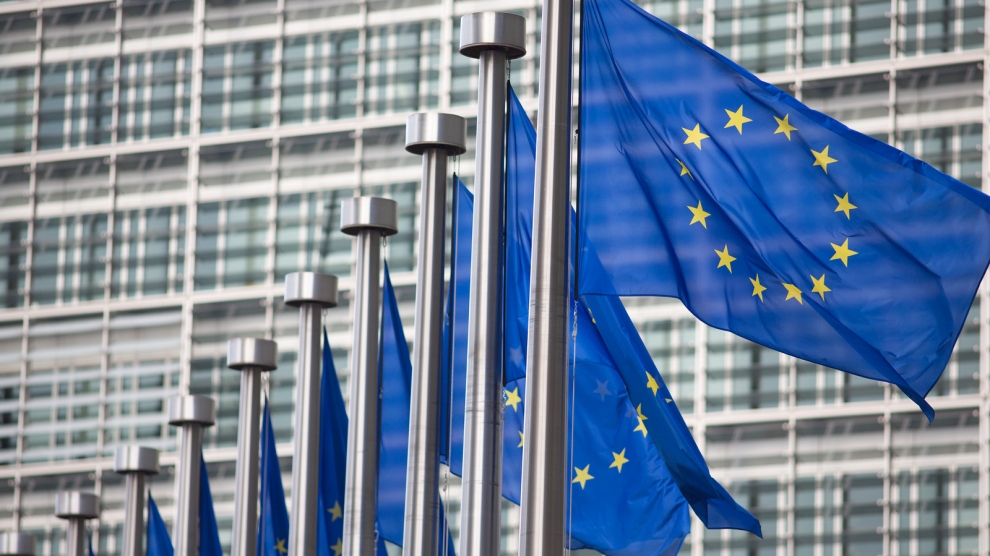
This week, the European Commission approved the disbursement of 36 million euros in grant money for the Republic of Moldova. The announcement was made by Deputy Director-General for Neighbourhood Policy and Enlargement Negotiations at the European Commission, Katarina Mathernova, who paid an official visit to the Republic of Moldova between September 13-15, together with Managing Director for Russia, Eastern Partnership, Central Asia, Regional cooperation and OSCE, at the European External Action Service, Michael Siebert.
The EU officials had meetings with President Maia Sandu, Minister of Foreign Affairs and European Integration, Nicu Popescu, Speaker of Parliament, Igor Grosu, Prime Minister of the country, Natalia Gavrilita, as well as key representatives of Government, international financial institutions and the civil society, according to a press release issued by the Delegation of the European Union to the Republic of Moldova.
Beside such topics as the EU-Moldova relations and prospects, the priorities of the reform agenda of the new Moldovan Government, preparations for the Eastern Partnership Summit at the end of the year and the Transnistrian conflict settlement, the officials also discussed the EU assistance in support of reforms and the Economic Recovery Plan for Moldova, which was announced in June with a total EU support of 600 million euros over the next 3 years.
“The first measures under the Economic Recovery Plan will shortly materialize, with the expected disbursement of 36 million euros in grant money under budget support programmes to support the authorities’ efforts to fight against the consequences of the pandemic. Moldova can count on EU’s assistance on its path to reforms and to recovery, bringing tangible results to citizens,” Katarina Mathernova stated.
The plan is based on assistance provided by the European Union through various bilateral and regional instruments, aiming to mobilize the funds in the form of grants, loans, guarantees and macro-financial assistance.
“The Economic Recovery Plan for the Republic of Moldova involves much more, not just this financial support provided immediately. It must help digital transformation, strengthen infrastructure, energy efficiency, education and support small and medium-sized enterprises,” the EU official also said.
As Prime Minister Natalia Gavrilita informed, “The Economic Recovery Plan and the 5 flagship initiatives for Moldova in the Eastern Partnership will directly contribute to the reform and consolidation of institutions, stimulate long-term socio-economic development, bring direct benefits to citizens, and unleash new economic opportunities through promoting the green agenda and digitization. Small and medium-sized enterprises (SMEs) have been hit hard by the crisis. Promoting and diversifying access to finance and reducing collateral requirements will be essential in supporting economic operators. We are grateful to the EU partners who will launch two programs to support 50 000 independent Moldovan SMEs to adapt to the new conditions.”
President of the Republic of Moldova, Maia Sandu, welcomed the decision of the European Union to disburse about 745 million lei in grant money, as the official page of the President’s Office announced. “EU support comes after a long period of freezing of European assistance, caused by former governments. We managed to relaunch the political dialogue with the European Union and resume financial assistance. The Republic of Moldova is gradually regaining the trust of its strategic partners. This European support is also a signal of encouragement for the new Government team in its commitment to clean up the institutions, fight corruption and launch development programs in the country,” said Maia Sandu.
Photo: unknown
Economy
Romania and Moldova signed a partnership memorandum pledging to cooperate in promoting their wines
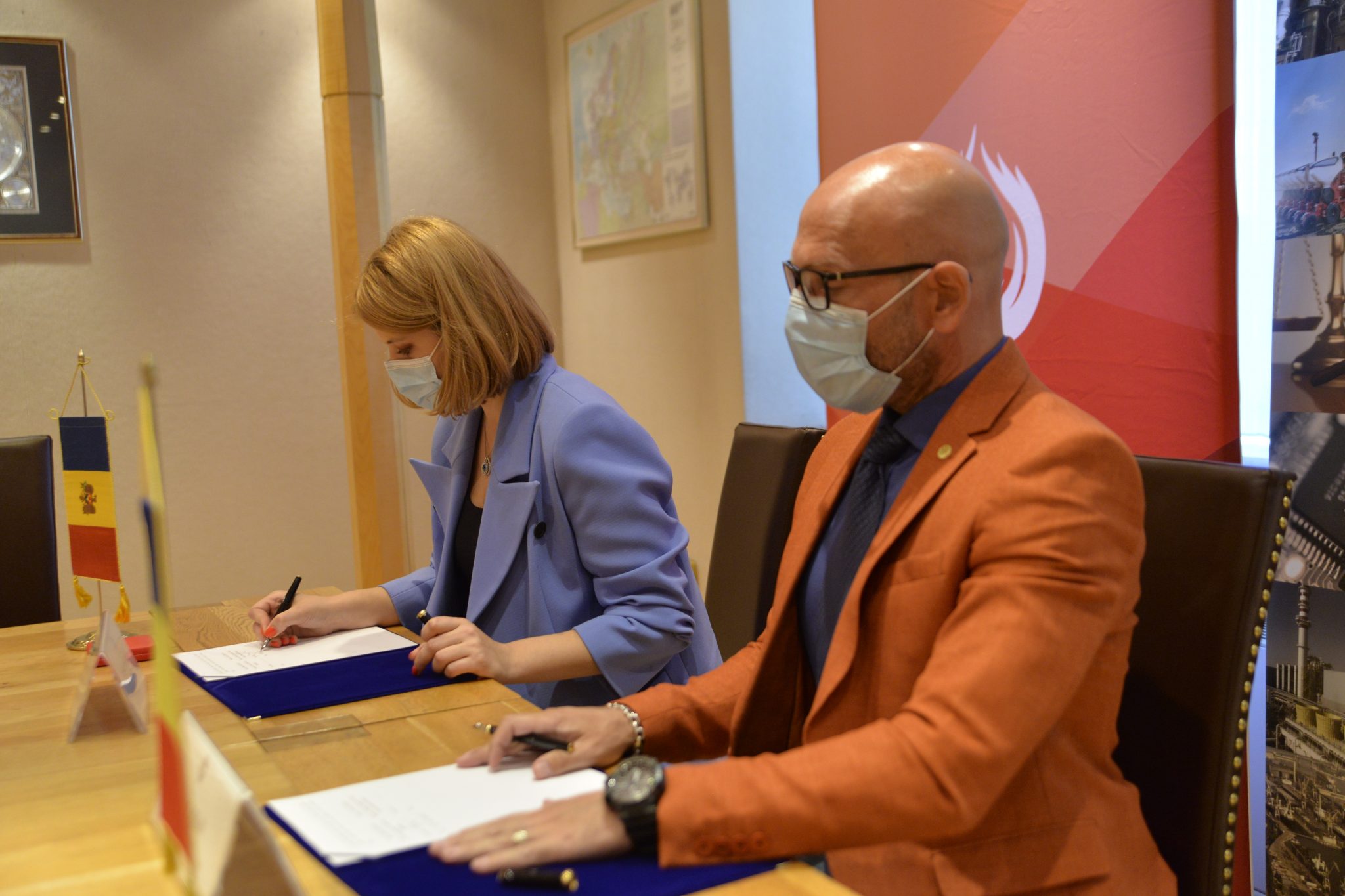
The Chamber of Commerce and Industry of Romania (CCIR) and the National Office for Vine and Wine (NOVW) of the Republic of Moldova signed, last week, a memorandum of cooperation on organizing joint promotional activities in the markets of common interest, as the CCIR announced.
China, Japan or the USA are just some of the markets targeted by the Romanian and Moldovan institutions. The memorandum also involves advertising activities for wines from common indigenous varieties, promoting the oeno-tourist region, developing a tourist route in the two states, exchange of experience, study visits, and mutual support in identifying new export opportunities. “We are very confident that this collaboration between our organizations will lead to sustainable economic growth and a higher degree of well-being among Moldovans and Romanians,” claimed Deputy Secretary-General of CCIR, Bogdan Visan.
On the other hand, Director of the NOVW, Cristina Frolov, declared that no open competition with Romania is aimed at the governmental level of the Republic of Moldova. “This request for collaboration is a consequence of the partnership principle. Romania imports 10-12% of the wine it consumes, and we want to take more from this import quota. Every year, the Romanian market grows by approximately 2.8%, as it happened in 2020, and we are interested in taking a maximum share of this percentage of imported wines without entering into direct competition with the Romanian producer,” the Moldovan official said. She also mentioned that Moldova aims at increasing the market share of wine production by at least 50% compared to 2020, and the number of producers present on the Romanian market – by at least 40%.
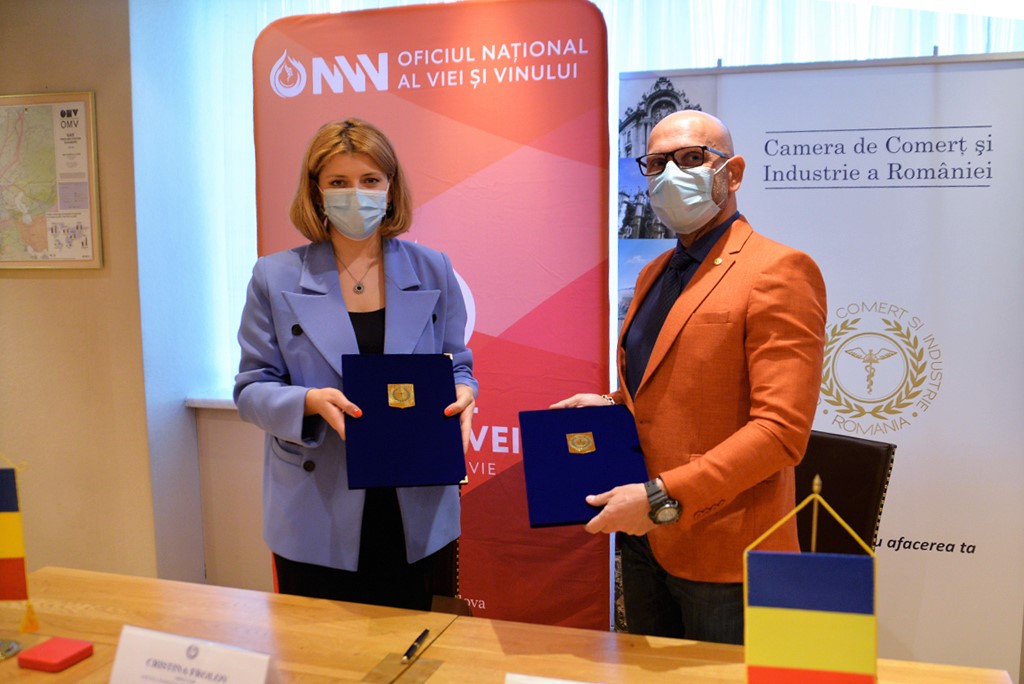
Source: ccir.ro
**
According to the data of the Romanian National Trade Register Office, the total value of Romania-Moldova trade was 1.7 billion euros at the end of last year and over 805 million euros at the end of May 2021. In July 2021, there were 6 522 companies from the Republic of Moldova in Romania, with a total capital value of 45.9 million euros.
The data of Moldova’s National Office of Vine and Wine showed that, in the first 7 months of 2021, the total quantity of bottled wine was about 27 million litres (registering an increase of 10% as compared to the same period last year), with a value of more than one billion lei, which is 32% more than the same period last year. Moldovan wines were awarded 956 medals at 32 international competitions in 2020.
Photo: ccir.ro
Economy
Moldova’s hope to be a top walnut exporter and its main difficulties
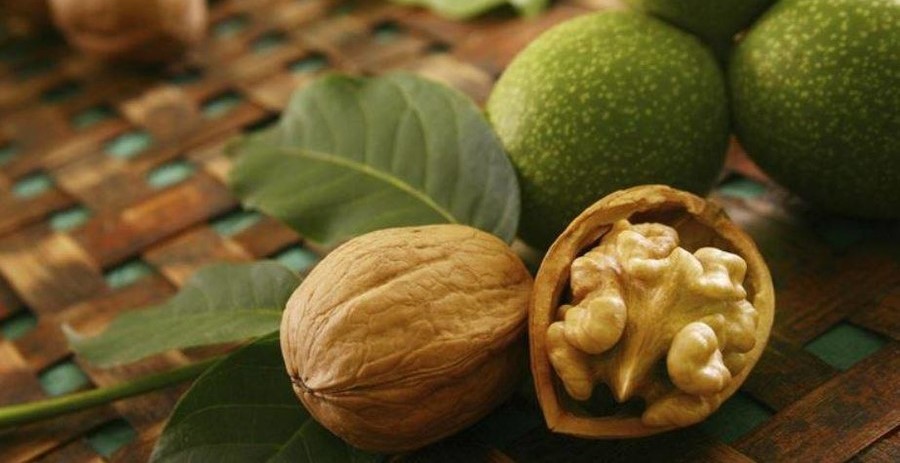
The Republic of Moldova has perfect weather conditions for growing walnut trees, that creating a great potential of walnut production and trade, especially on international markets, where the demand is way higher than the product’s supply. National and international experts believe that the country’s walnut production industry is on the verge of important transformations, which could lead to increased yields, quality and competitiveness worldwide.
According to authorities, Moldova exports 34-35 thousand tons of walnuts in shell, which is about 7% of the total export of fruit and 5% of the total export of horticultural products. The export value is assessed as being $120 million, that being 57-60% of the total fruit export value and about 50% of horticultural export value. Most of walnut crops are exported to the EU countries, such as France, Germany, the Netherlands, Romania and Austria. The country’s exports were among the world’s top 10 when it comes to the highest dollar value of the product during 2020.
Viorel Gherciu, Minister of Agriculture and Food Industry, pointed out that the production in the domestic walnut industry has increased by 55% in the last five years, which ranks Moldova among the main producers in the world.
“The biggest opportunity for this industry is that we are in the geographical proximity of the largest walnut import area in the world, which is the European Union, with almost 40% of total imports in the world. We are on the EU border, with privileged relations, with an Association Agreement. We already enjoy a good relationship in working with European importers, they trust our processors. A very close collaboration has been created and this is, in fact, the guarantee for those who invest in the area,” claimed the president of the Walnut Producers Association, Oleg Tirsina.
The data provided by the National Bureau of Statistics show that there are 34.7 thousand hectares of walnut plantations in the country. 20.90 hectares are represented by orchards. 75% of planted orchards are formed of old varieties trees. 30-35% of the exported production comes from orchards, the rest comes from individual farmers and plantations along the roads. This means that the quality of walnut production is not at its maximum potential. Developing commercial plantations through orchards modernization and extension of walnut varieties would provide double yield and better quality, experts say.
Governmental support in the form of subsidizing solutions, foreign investments and credit options are indispensable for the industry development. One of the financing options is the credit line of the European Investment Bank Project. Since 2016, 15 producers and processors of nuts, almonds and hazelnuts have benefited from these loans with the total amount of investments worth 8.7 million euros. A further extension of the project would provide another 60 million euros for the modernization of the horticultural sector in general and for harvesting organic walnuts in particular.
Photo: heymoldova.com


